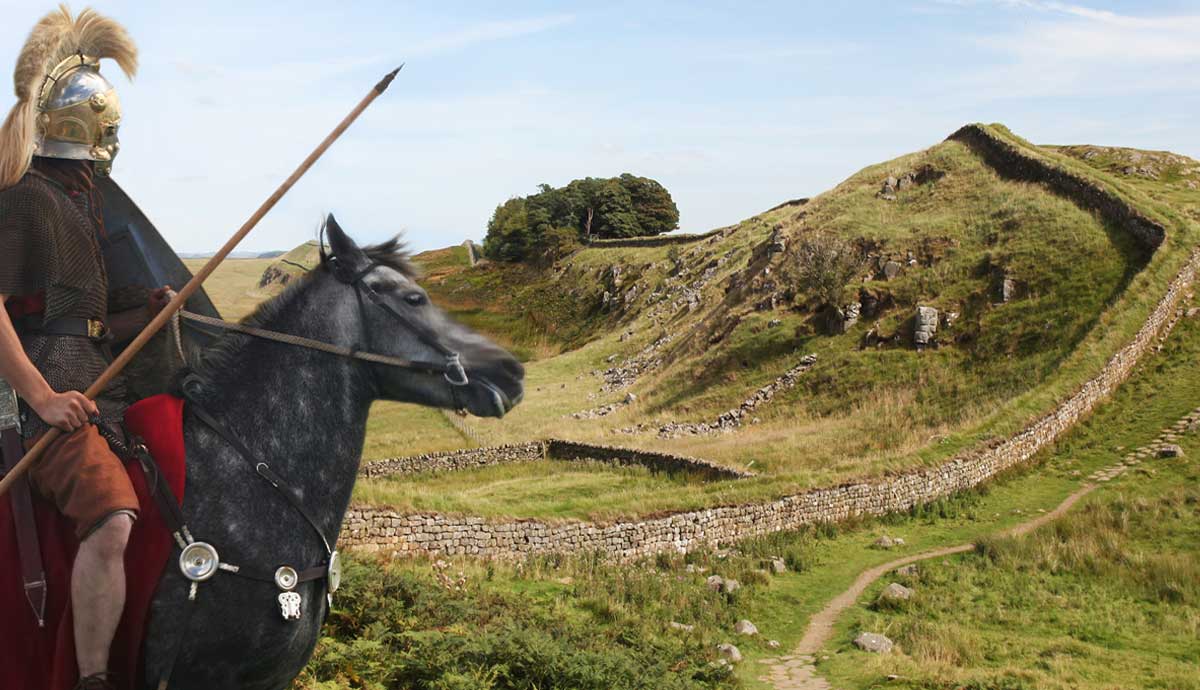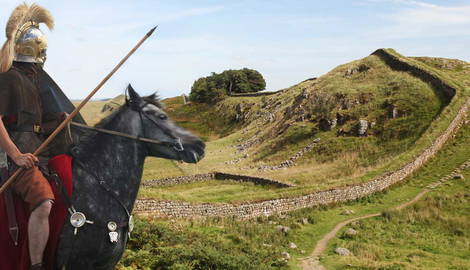
The Roman Empire stretched throughout Europe, expanding into the British Isles and establishing a significant presence that helped bring civilization to England and Scotland and greatly influenced their history. One emperor, Hadrian, constructed a wall in the north of England, then known as the province of Britannia, for various possible purposes.
The Location of Hadrian’s Wall

Hadrian’s wall in Northern England runs between the towns of Bowness-on-Solway (less than a mile from Scotland) near the west coast to Wallsend on the east (about 68 miles from Scotland). The wall is about 73 miles long, and was originally constructed to be about 8 feet wide and around 12 feet tall, though no part of the wall stands at that height any longer. It is the largest archaeological structure in England, with much of the wall still standing and contains some significant archaeological sites.
The Composition of Hadrian’s Wall

Hadrian’s wall is built of either cut sandstone blocks or turf, often around a core of rubble. Along its length were various outposts, ranging from 80 small milecastles for 15-20 soldiers to 16 larger forts along its length, able to house about 600 men and placed about 7 miles apart depending on the terrain. The wall also contained multiple turrets in between milecastles.
A mound and ditch structure known as the Vallum runs along the south of the wall. The purpose of the Vallum is not completely certain, with the predominant theory that it marked an area in which civilians were prohibited.
Why Was Hadrian’s Wall Built?

Construction on Hadrian’s wall began around 122 AD and was completed around 128 AD. Hadrian became emperor of the Roman Empire in 117 AD, and may have been more concerned about preserving the empire rather than expansion. The Empire was undergoing several rebellions in some provinces, and structures such as the wall in England and limes along the borders in other parts of the empire helped serve to defend the empire and provide housing for soldiers. As there were no natural borders such as mountains in northern England, a more extensive structure was necessary and Hadrian’s wall is almost unique among Roman defensive architecture.
The wall was mainly constructed by the Roman Legion Legio VI Victrix under Roman senator and governor of Brittania Aulus Platorius Nepos.
How the Wall Was Used

The intent was that about 10,000 Roman soldiers would occupy Hadrian’s Wall, but its usage was sporadic after Hadrian’s death in 138 AD. The Emperor Antoninus Pius attempted a similar wall known as the Antonine Wall further north to no success. Under Marcus Aurelius in 164 AD and Septimius Severus around 211 AD, Hadrian’s wall found some usage but as it was on the extreme frontier of Roman expansion with more important problems arising on mainland Europe, the wall – and Britannia – would be abandoned by the Romans in the early 400s. As the wall was defensive in nature, there is no record of a significant battle which occurred along the wall.

Now, even with significant wear over almost two thousand years, the wall exists as a historical site, with various attempts at preservation and excavation over the years. Some significant finds of Roman artifacts have been discovered in the fort areas, such as legion symbols, pottery, coins, and other bits and pieces left behind by the Roman soldiers. The wall is a popular tourist attraction, and a symbol of Roman empirical expansion and ambition.







